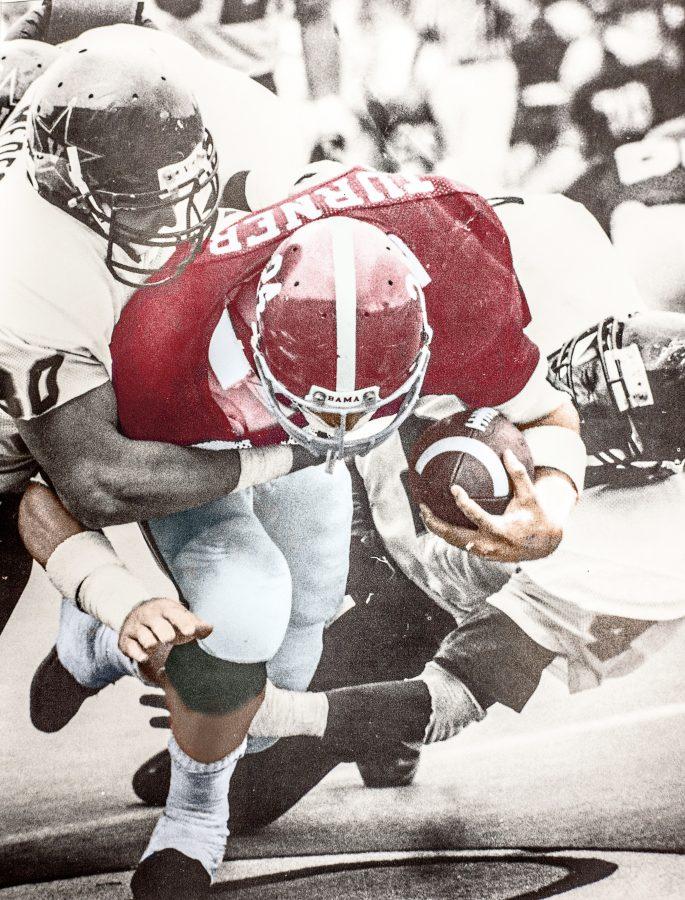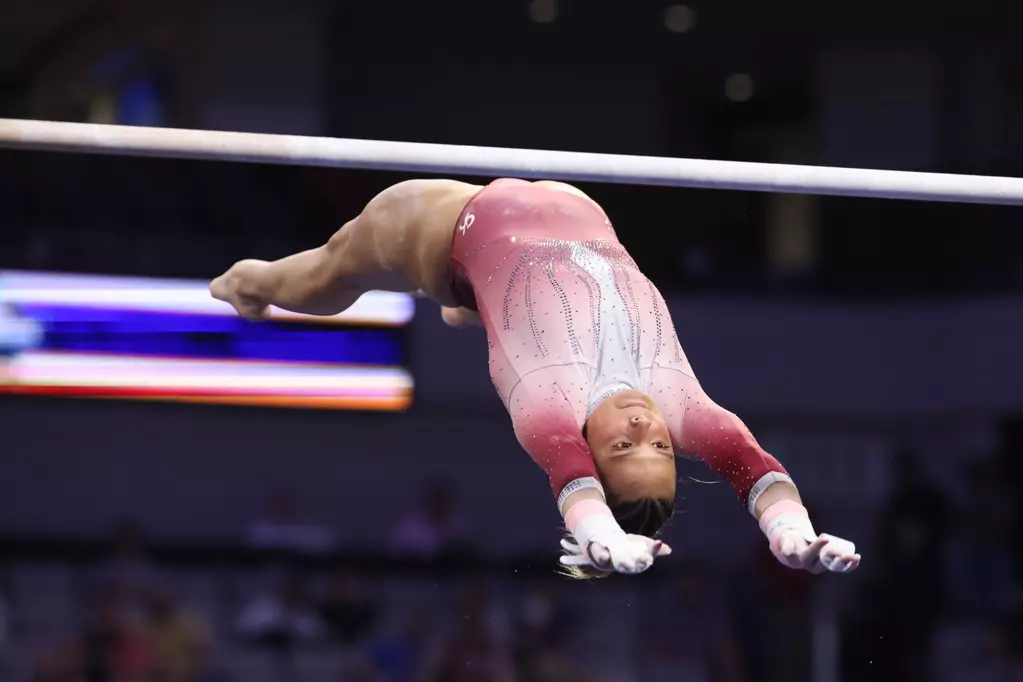 When Kevin Turner was 5 years old, he began his first season of organized football. Twenty-six seasons later at age 30, Kevin Turner would play his last season of organized football.
When Kevin Turner was 5 years old, he began his first season of organized football. Twenty-six seasons later at age 30, Kevin Turner would play his last season of organized football.
Turner, a former University of Alabama and NFL fullback, has amyotrophic lateral sclerosis, a neurodegenerative disease that attacks the motor neurons in the brain and spinal cord that control muscle action. The disease is better known as ALS, or Lou Gehrig’s disease.
For Turner, ALS has taken most of his ability to use his arms and hands.
“There’s very few things I can do with my hands,” Turner said. “I can’t eat by myself. I can’t take my pants off, can’t put them on. Can’t get dressed, can’t brush my teeth. It’s hard on someone who’s very independent.”
The rest of his body is slowly deteriorating. Speech continues to worsen and swallowing becomes more and more of a strenuous task. Until last August, Turner needed a ventilator to help him breathe. He underwent a surgical procedure on his diaphragm that allows him to breathe on his own for the next two to three years.
Although his feet and legs are fine for walking right now, there will come a point soon enough when he will lose that ability as well.
Eventually, the incurable disease will take Turner’s life.
(See also “University researchers find medical breakthrough“)
The Research
In August 2010, just three months after Turner’s diagnosis, researchers at Boston University’s Center for the Study of Traumatic Encephalopathy linked ALS to chronic traumatic encephalopathy, a degenerative disease of the brain that causes dementia, mood swings, memory loss and depression.
Research conducted by the CTSE showed that ALS is eight to 10 times more likely to be diagnosed in NFL players than it is in the average citizen, making CTE a plausible cause.
Dr. Ann McKee, a co-director of CTSE and the neuropathologist who has found CTE in the brains of more than 50 former athletes, made the connection when she found toxic proteins in the spines of three former athletes – two football players and one boxer – who had ALS and CTE. The proteins were an unusual find in that she had not seen them in earlier studies on non-ALS athletes who had CTE or average citizens who died of ALS with no signs of CTE.
“What we’re finding is people with a history of repetitive brain trauma. Some of them are suffering from the degenerative disease called chronic traumatic encephalopathy that is causing their brain to essentially rot, even after they stop getting hit in the head for the rest of their lives,” said Chris Nowinski, one of the two other co-directors of CSTE and a former WWE wrestler.
Nowinski said there’s no minimum amount of concussions – the most obvious example of brain trauma – that someone must have to get CTE; rather, longevity is what counts.
“The strongest correlations are length of career, especially with boxers,” he said. “There’s a lot of risk factors that we simply don’t understand, but what we’re confident of is that no one has ever gotten this disease who does not have a history of extraordinary brain trauma.”
Turner, who played fullback, said he believes that the brain trauma he received while playing football all those years is what ultimately caused his ALS. Both he and Nowinski believe he has CTE.
“If I knew I was going to have ALS when I was 40, I wouldn’t have played,” Turner said. “But if I would have been presented with all the facts, I think I would have not only played differently, but I would have probably retired two years earlier.”
A native of Prattville, Ala., and a current resident of Birmingham, Turner said he recalls two occasions during his days in the NFL with the New England Patriots and Philadelphia Eagles where he was knocked out with a concussion during a game but still finished playing in the game.
“When I was playing, we thought that when you kind of got yourself oriented that you’re fine. And you go ahead, keep playing,” he said. “I was ignorant to the seriousness of banging your head around just because we had helmets on and there’s no bleeding or pain. We thought we were fine.”
Turner said he estimates that, in total, he probably received between 25 to 30 concussions during his football career, with the possibility of up to 100. That doesn’t include sub-concussive hits, which is brain trauma that doesn’t rise to the level of causing concussion-like symptoms, thus making them impossible to diagnose on the sideline.
(See also “Lockout should not be NFL’s biggest concern“)
The Foundation
Turner started the Kevin Turner Foundation in December 2010 to raise awareness and money for ALS and, because of his involvement in research that links CTE to ALS, awareness about the seriousness of concussions and brain trauma across all sports at every level.
Since its inception, the foundation has raised around $500,000.
The money has played a small role in research conducted by CSTE, which is moving closer toward finding a way to diagnose CTE while a person is still living, among other things, Nowinski said.
Turner said he hopes to continue to make contributions with the $5 million settlement that he is set to receive from the NFL. He and nearly 4,500 other former NFL players sued the league for $765 million for allegedly concealing information regarding the dangers of concussions. The former players won the lawsuit on Aug. 29.
Turner said he realizes that one of the best methods for athletes fighting ALS is to avoid harm’s way in the first place. Along with receiving proper care in the event of a concussion, he said the game he so dearly loved playing as a boy should not be played until the ninth grade.
McKee said the developing brain goes through a multitude of changes between the ages of 6 and 14. Turner said this makes it an unsuitable time to play football with so much potential for brain trauma.
His son, Cole, is 10 and no longer allowed to play football until he reaches high school, while his oldest son, Nolan, 16, concluded his sophomore season at Vestavia Hills High School last fall.
Turner’s father, Raymond, said he wishes he would have known not to start Turner at such an early age.
“It’s a hard decision to make; we all love football,” Raymond said. “We’re not trying to kill football by no means, but we’d be a lot smarter about the things we do. If a kid gets knocked out, he’d come out and go back in. Little different from what they do now. They keep you out, check you over. You used to come out, and if you could see a couple of fingers, you’d be back in the game.
“I’d be a lot more observant now and see that he got taken care of a little better.”
Turner will donate his brain to CTSE after passing, where it will be studied by McKee and Nowinski, he said. Thousands of brains are needed to expand upon their findings.
As more cases are studied, Turner said he believes that, along with gene therapy and stem cells, a cure for ALS will be found by the end of this decade. It’s a day he hopes to live to see, he said.
Until then, he will use his hands in ways that remain unaffected by his disease.
“Hopefully, I’m still lending a hand to someone else who needs it,” he said.
(See also “Pulse: A primer on Crohn’s disease“)









